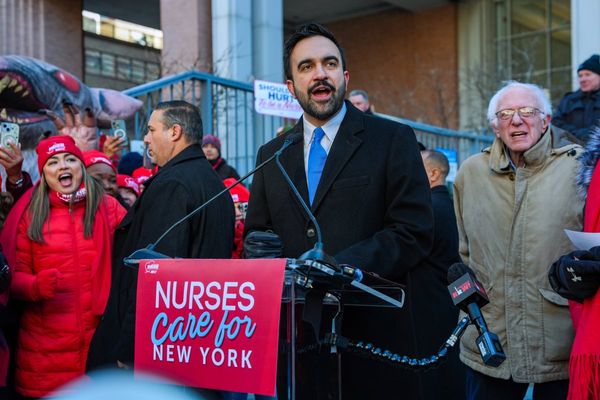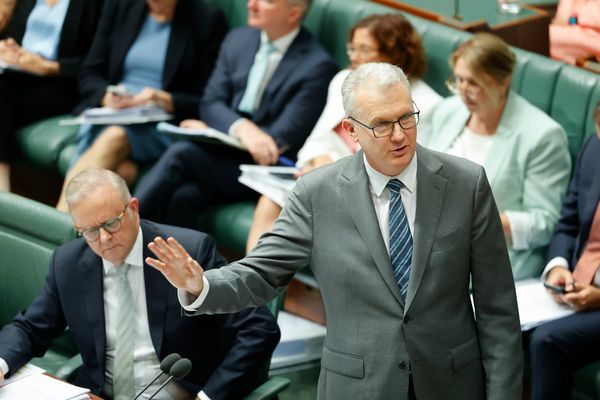
What motivates the journalists and commentators in the business press, most especially the Financial Review, to constantly demand interest rate hikes?
Back in 2018, the AFR launched a campaign demanding higher interest rates, led by a coterie of right-wing and neoliberal commentators insisting that the Reserve Bank’s low interest rates were a kind of immoral laxity that needed to be replaced with the rigour of tighter monetary policy. We tracked the campaign at the time, pointing out its persistent fallacies and the obsessions of its advocates.
As we now know, the problem wasn’t that interest rates were too low then, but that they were too high — something the RBA belatedly recognised in 2019 when it cut rates from 1.5% to 1% and then 0.75%, before the pandemic arrived to upset everything.
And for over a year now, the AFR has been on a similar crusade, demanding bigger and faster rate hikes.
As with the 2018 campaign, there’s an element of morality in this mindset: the AFR sees ordinary Australians as needing to be punished, just as it regards ordinary workers as requiring the misery of lower pay packets and more precarious work. It’s the seething contempt for ordinary Australians of comfortable journalists, economists and business figures who know they’ll never have to worry about losing their jobs, or struggling to pay a mortgage or utility bill, or delaying having a kid because they can’t afford it.
But it also seems like the RBA’s failure to increase rates annoys it as much because it gives them nothing to write about, than because the failure means the RBA is mollycoddling Australians. It has to instead insist that even if there were no rate rise now, one would be coming soon enough.
So, according to one AFR journalist yesterday, forget that the RBA held rates steady, governor Michele Bullock “may be forced to deliver a cash rate rise as soon as next month, as several economists warn inflation is running faster than forecast following a spike in oil prices”.
And the AFR‘s senior galah reacted with “the November board meeting will be a crunch time for the new governor”. The reason? Those pesky workers in “labour-intensive services sectors”. Bloody aged care workers pushing up inflation!
Bullock’s post-meeting statement yesterday was carefully parsed to discover that a Melbourne Cup Day rate hike (a favourite obsession this time of year) loomed. Except, the RBA’s commentary about inflation hasn’t changed in months. Here’s what Bullock had to say about inflation yesterday:
Inflation in Australia has passed its peak but is still too high and will remain so for some time yet. Timely indicators on inflation suggest that goods price inflation has eased further, but the prices of many services are continuing to rise briskly and fuel prices have risen noticeably of late. Rent inflation also remains elevated. The central forecast is for CPI inflation to continue to decline and to be back within the 2-3% target range in late 2025.
And here’s Lowe in September:
Inflation in Australia has passed its peak and the monthly CPI indicator for July showed a further decline. But inflation is still too high and will remain so for some time yet. While goods price inflation has eased, the prices of many services are rising briskly. Rent inflation is also elevated. The central forecast is for CPI inflation to continue to decline and to be back within the 2-3% target range in late 2025.
And Lowe in August…
Inflation in Australia is declining but is still too high at 6%. Goods price inflation has eased, but the prices of many services are rising briskly. Rent inflation is also elevated. The central forecast is for CPI inflation to continue to decline, to be around 3.25% by the end of 2024 and to be back within the 2-3% target range in late 2025.
The RBA has been saying the same thing over and over for months, and keeping rates on hold — meaning there’s literally nothing to report. So the business press — which makes its money from convincing investors and businesses that it’s telling them things they need to know — has to invent stories from the most fractional shifts in language in order to maintain a “rate rise looms” narrative.
The rising cost of petrol is a welcome distraction for this crowd, as they think it provides enough reason for another rate hike, as if the Russians and the Saudis will see a 0.25% rate rise in Australia and think “better turn on the spigots”. It’s the same weird logic that drove punitive rate hikes in response to Russia’s invasion of Ukraine or external supply chain problems, both well beyond the capacity of Australian households or even policymakers to influence.
One Nine newspaper commentator pointed out that Bullock’s first statement as governor contained 673 words to say what Lowe said in his final statement in 645 words, and suggested “it is clear word inflation may be a problem”.
That would be better directed at much of the commentary and coverage in the past 24 hours.







